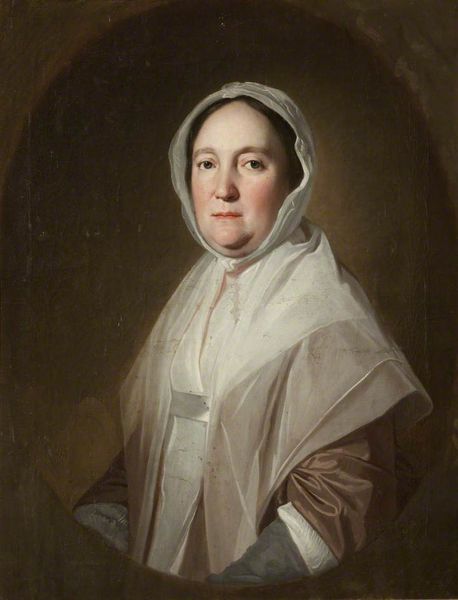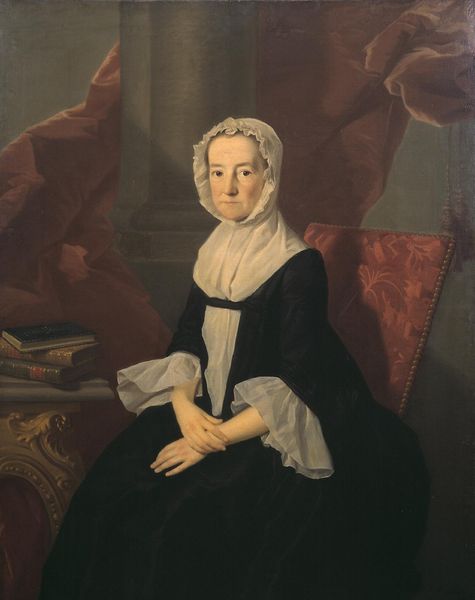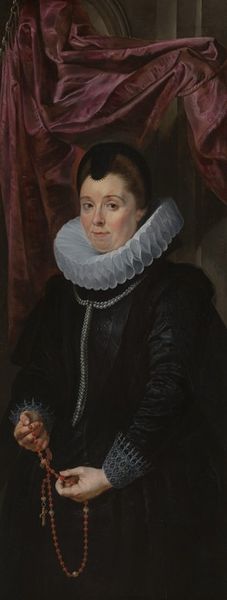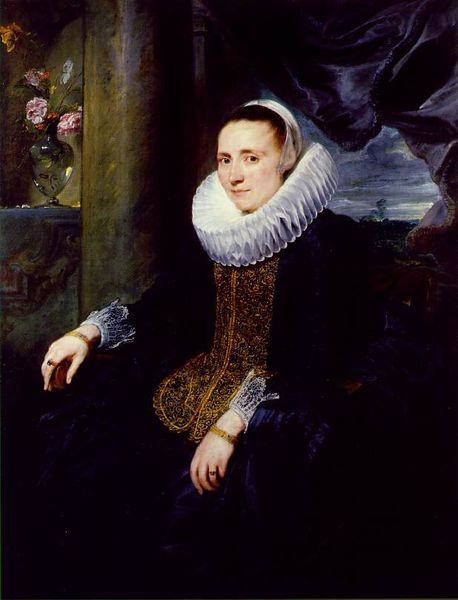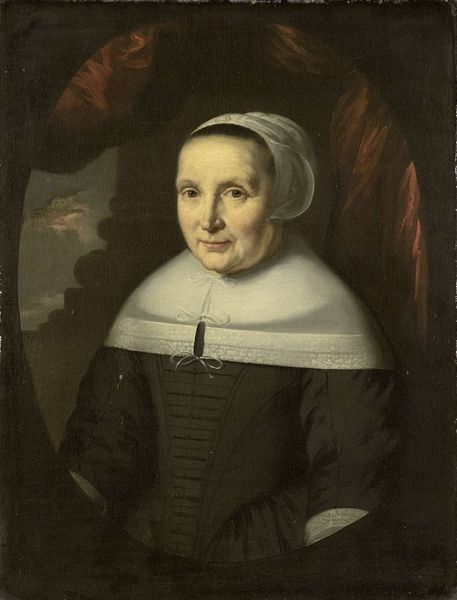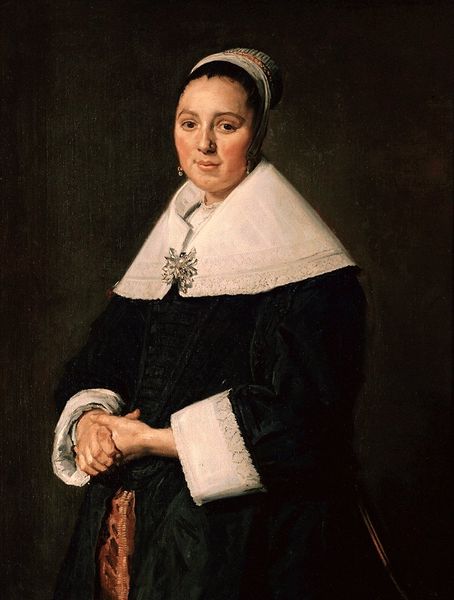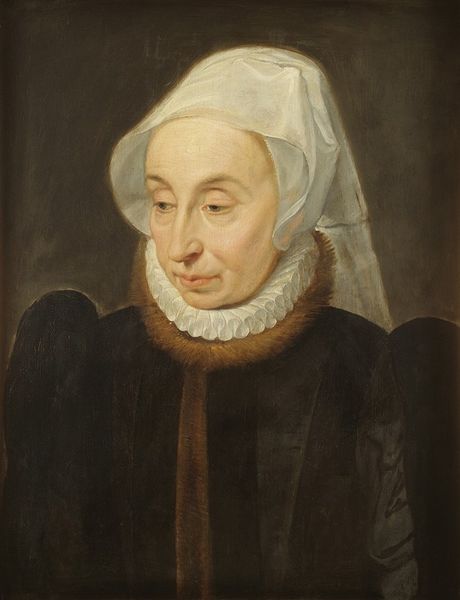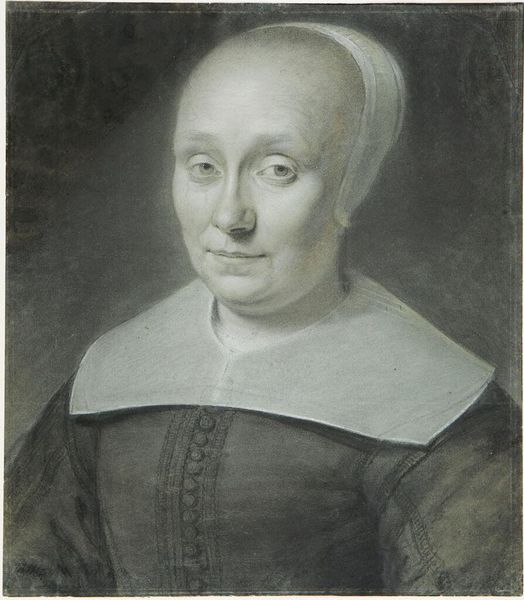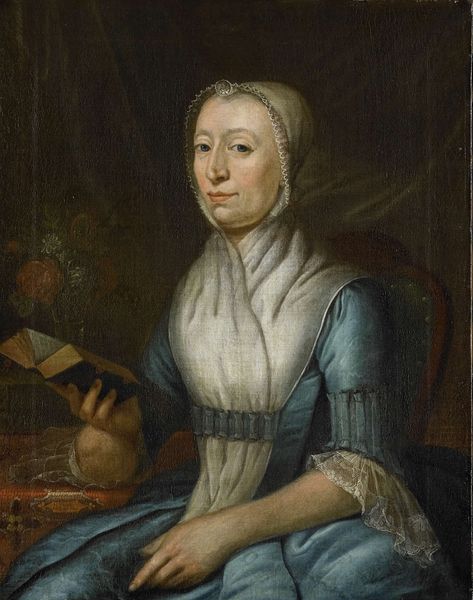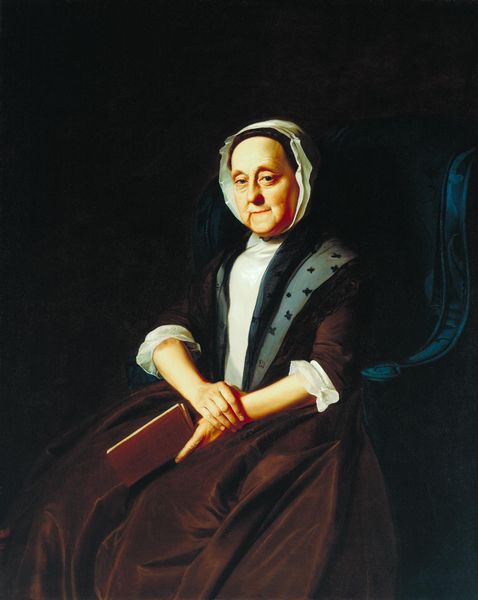
painting, oil-paint
#
portrait
#
figurative
#
neoclacissism
#
painting
#
oil-paint
#
figuration
#
history-painting
#
facial portrait
#
academic-art
#
portrait art
#
rococo
Copyright: Public Domain: Artvee
Editor: Here we have John Singleton Copley’s "Mrs. Ebenezer Storer," painted between 1767 and 1769. It's an oil painting and… she looks so serious! It's quite a stark, direct image. What do you see in this portrait, looking at it with your expert eye? Curator: The sober presentation definitely makes a statement. Consider the bonnet and the dark, enveloping fabric: these aren't merely garments; they are signifiers of status and a certain reserved piety within that colonial society. Notice the contrast with the delicate lace at her throat—a subtle marker of refinement. How might these visual elements work to convey the character and social standing of Mrs. Storer? Editor: I guess it's a balance. Restrained, but still indicating wealth and position. Almost like she’s saying, "I'm important, but not flashy." The dots on her sheer shawl--they almost feel rebellious, a bit out of place. Curator: Exactly! And symbols frequently hold more than one meaning. That ornamentation, a sprinkling of polka dots, seems innocent, even playful, but could also represent an understanding of contemporary European fashion and visual culture trickling into the colonies. A hint of worldliness under the surface of puritan severity? Editor: So it’s not just about her as a person, but as a symbol of a whole cultural moment? That shawl… does it imply a specific trend? Curator: It evokes broader cultural tensions. These colonists were forging a new identity but still clinging to ties with Europe, indicated in the rococo sensibilities present in the depiction. It makes you think about the shifting self-perception that inevitably contributed to the American Revolution a few years later, doesn't it? Editor: It does. I hadn't thought of it in relation to those building tensions, but it makes perfect sense. This painting suddenly feels like more than just a portrait. Curator: Indeed. Art like this whispers volumes if we learn how to listen to it, to its symbols. Every image leaves a cultural memory.
Comments
No comments
Be the first to comment and join the conversation on the ultimate creative platform.

